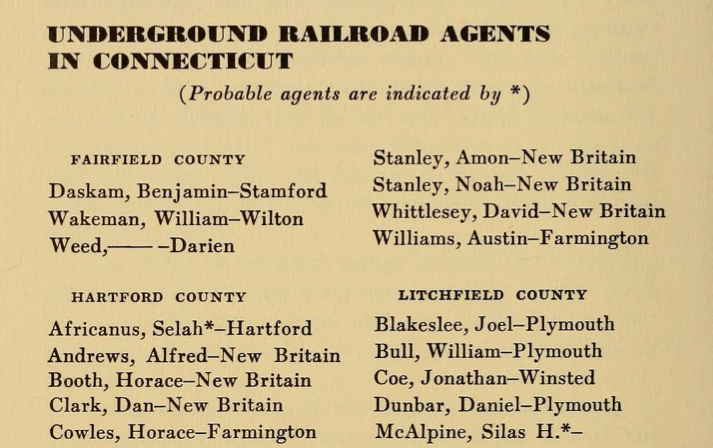The Underground Railroad, developed in the early 19th century, was a system of safe havens designed to help fugitive slaves escape to freedom. Traveling on foot, by wagon, on horseback, and in boats, slaves moved from station to station along routes to free northern states, Canada, or other locations outside the country where the institution of slavery did not exist. In New England, numerous towns and cities provided safe havens for those escaping slavery. One of the Underground Railroad’s most vital New England routes went through what is now the city of New Britain.
Initially very slow to abolish slavery within its borders, Connecticut had a reputation in early New England for being hostile toward Black people. The state created the first fugitive slave laws as early as 1645, and while it passed measures to abolish slavery in 1784, it did not officially complete the task until 1848. While Connecticut was greatly divided on the issue of slavery and the treatment of fugitive slaves, the Compromise of 1850 seemed to bring about a steady growth of anti-slavery unity within the state.
In the 1840s and ’50s, New Britain was an important center of anti-slavery activity. Fugitive slaves who entered the state in Stamford, New Haven, and Old Lyme worked their way through New Britain, Farmington, and Middletown on their way to Canada. Of the 22 identified Underground Railroad agents in Hartford County at this time, nine were residents of New Britain. As the two sides of the slavery issue continued sparring, The First Church in New Britain passed anti-slavery resolutions, abolitionists and non-abolitionists clashed at local anti-slavery meetings, and non-abolitionists set fire to barns belonging to New Britain abolitionists.
Despite a century and a half of work, historians still struggle to put together a concise narrative of the Underground Railroad in Connecticut. The clandestine nature of the system meant that participants left behind little evidence of Underground Railroad activities. Therefore, identifying specific homes or safe houses that contributed to the movement has been exceedingly difficult. One thing that cannot be questioned, however, is that New Britain and the surrounding area played an important part in aiding fugitive slaves in their quest for freedom.









